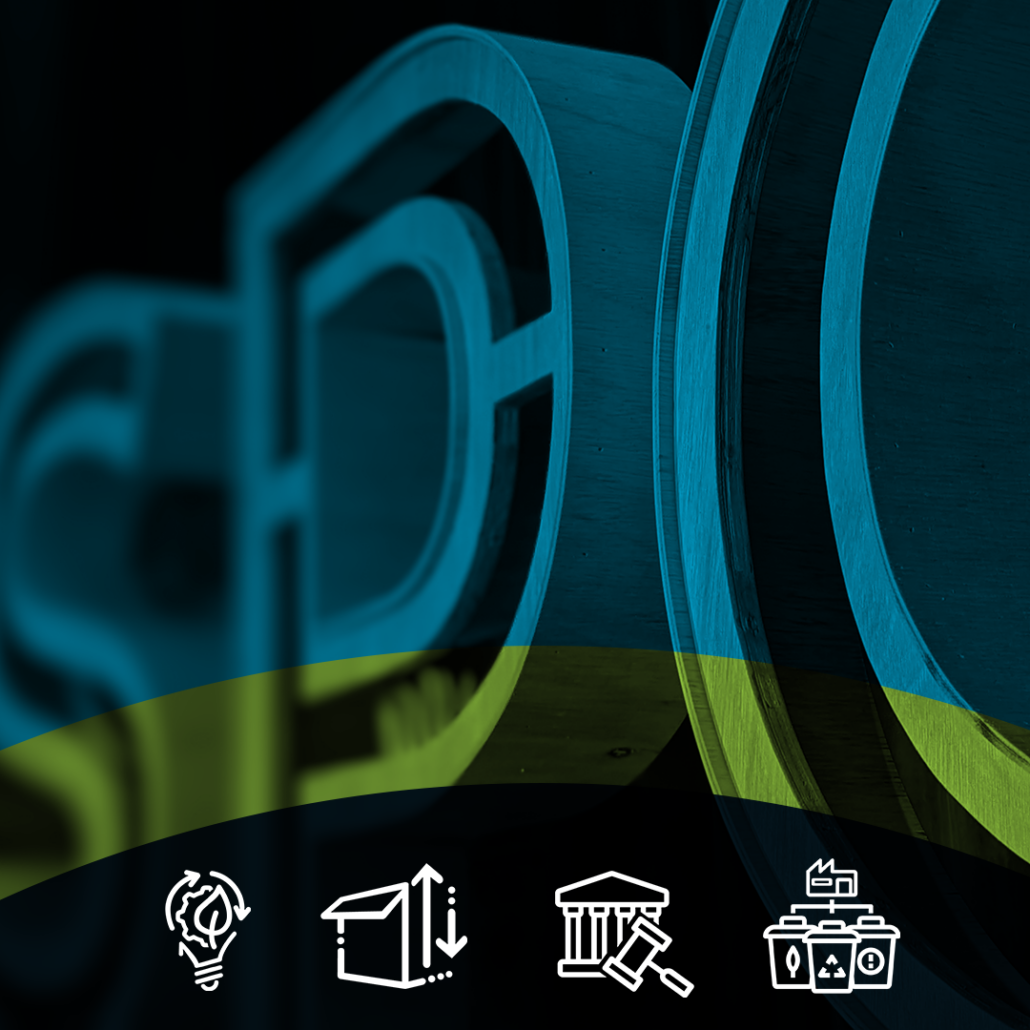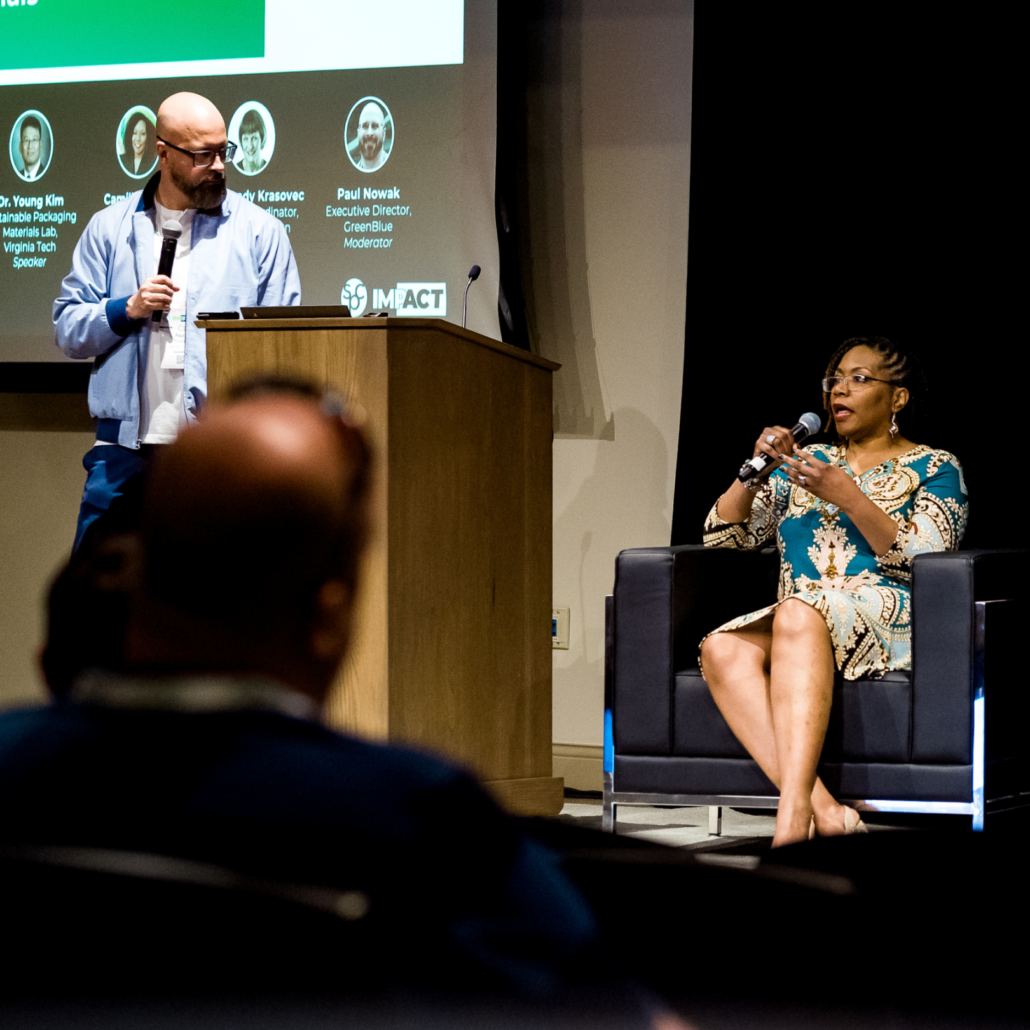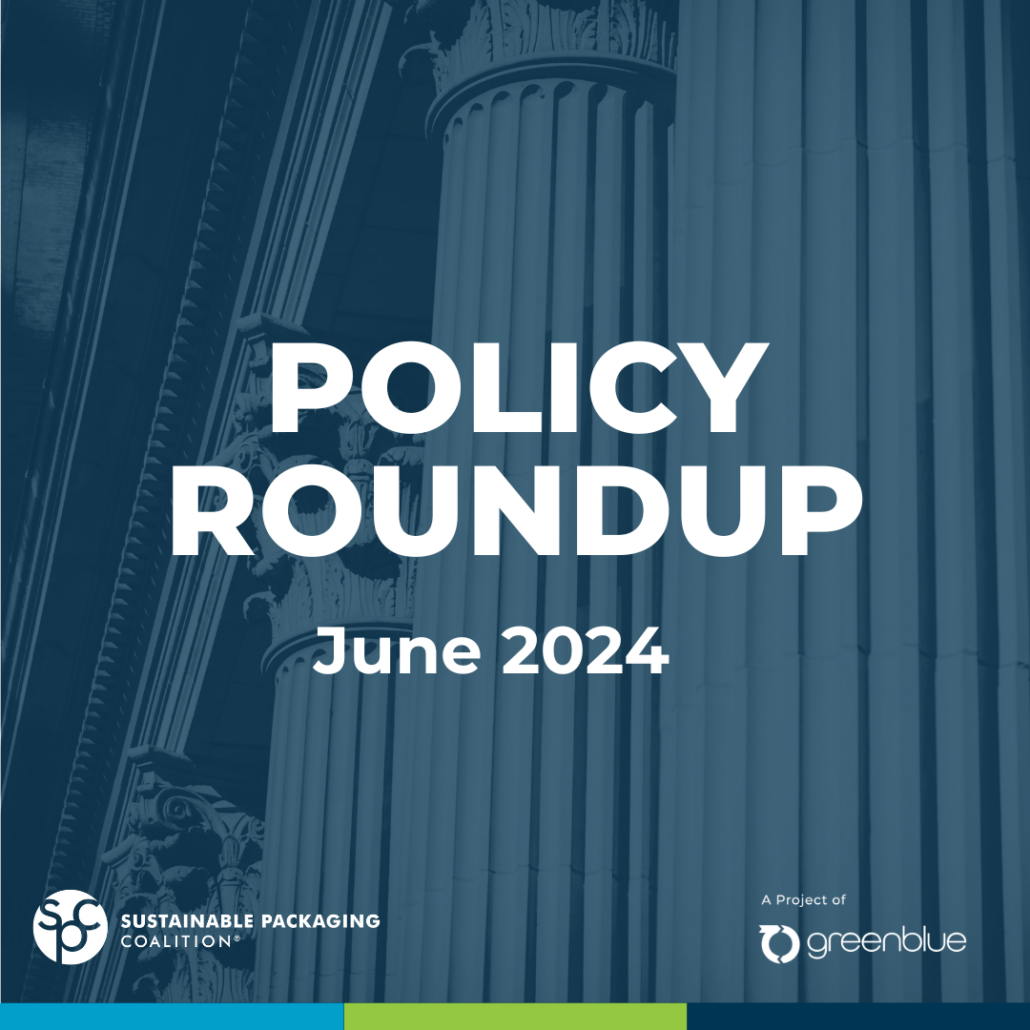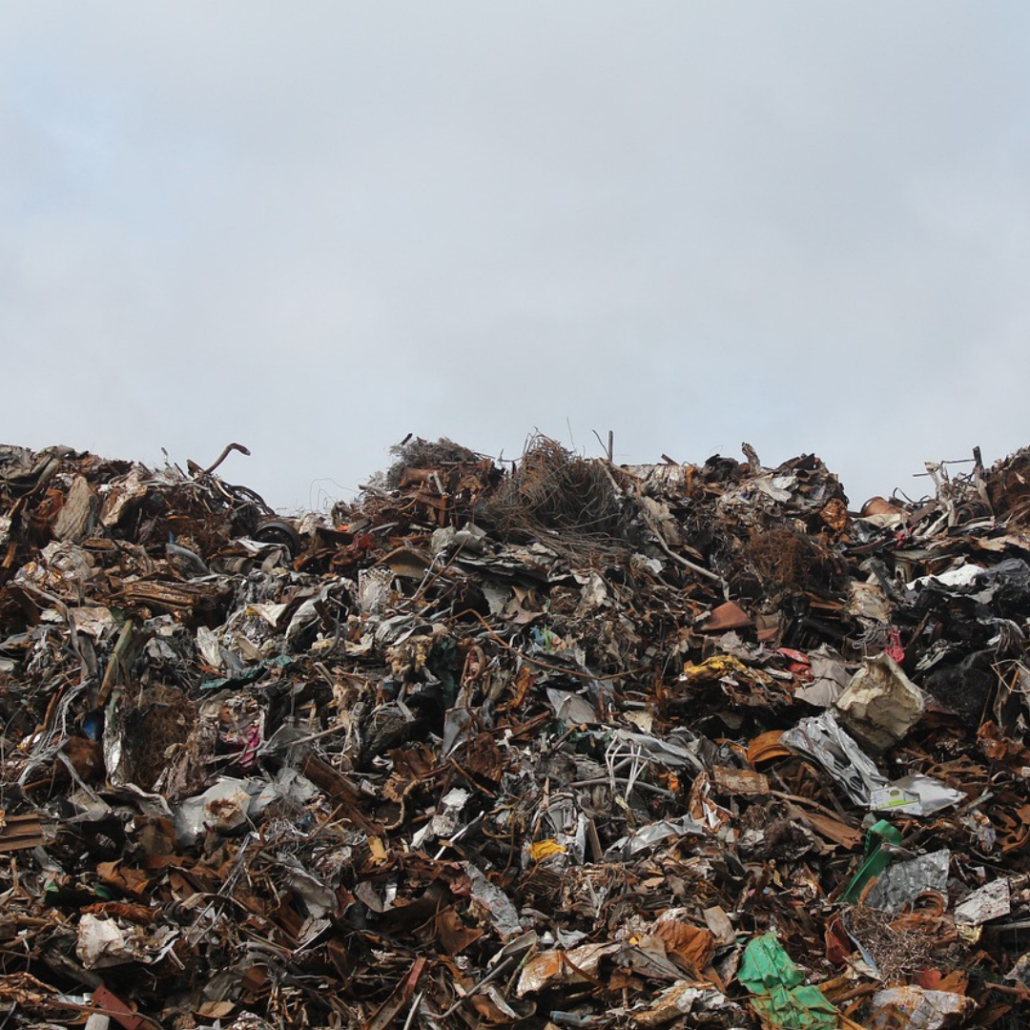Wondering what’s new from the Sustainable Packaging Coalition’s Four Pillars — Innovation, Design, Policy, and Recovery?
In this article, SPC’s Olga Kachook, Brad Kurzynowski, Lucy Pierce, and Paula Leardini got together to share updates on everything from the 100 year “quest” to design a paper bottle to packaging policies across the states. Throughout these pillar updates, the SPC team is sharing: programmatic updates, deeper dives into pillar-specific topics, resources, ways to get involved, and what they’ve been reading. We hope they help you advance sustainable packaging with us!
Check out updates on our four pillars:
Packaging Innovation Updates
In the months since our last update, several SPC staff attended Circularity 24, where innovation in materials for packaging and the switch to reusable systems came up time and again. Examples of packaging innovation—including the switch to paper, ocean-based feedstocks, and machine learning for sortation—highlighted in our 2024 Trends Report were featured in the programming and exhibit hall.
If you missed the event, you can learn about some of the exciting innovators featured at the event like Sway (seaweed packaging), Reusables.com (integrated payments for reusable packaging), and Glacier (robotics for recycling).
Looking ahead in this update, I’m breaking down an article on reusable packaging, sharing resources on innovation, and sharing ways to get involved in advancing packaging innovations!
– Olga Kachook, SPC Director, GreenBlue
Let’s Unpack It: What will it take to get companies to embrace reusable packaging? (Grist)
What is the biggest blocker for reusable packaging? Increasingly, evidence is pointing towards the lack of harmonization, with every company and industry attempting to solve the problem on their own. A recent Grist article summarizes the current state of reuse for food service:
“Instead of pooling resources and employing just one or two large cleaning and logistics services, businesses have so far chosen among several competing initiatives—or in some cases, have created and run their own programs. The result is a slew of incompatible containers, specific to just a few stores or locations, and inefficient systems for gathering, washing, and transporting between customers’ homes, sanitation facilities, and storefronts.”
The alternative to all of this is standardization for packaging formats, reverse logistics, and on-pack labeling. SPC is engaged with the standards group noted in the article—PR3—and has been supporting the development of a universal reuse symbol. Feedback from SPC and other industry groups and stakeholders has directed PR3 towards the “infinity loop” as the likely symbol for reuse.
Universal labeling is just the beginning. The SPC’s Reusable Packaging Collaborative is working on a future Reuse Roadmap resource (see below) that will dive deeper into how standardization is a critical step on the road to success.
New Resources:
- Packaging Innovation Trends Report: Our latest resource highlights the five big trends in innovation for sustainable packaging design and recovery.
- Bioplastics Knowledge Library Topic: Members have complimentary access to the Bioplastics topic in our Knowledge Library.
Get Involved:
- Reusable Packaging Collaborative: This Collaborative’s Steering Committee has been providing feedback on the upcoming Reuse Roadmap, which will outline the best categories for reuse and serve as a directory of other industry reports on policy, business models, and standardization. If you’d like to get involved in this group, please email us at collaboratives@greenblue.org.
- Compostable Packaging Collaborative: The Compostable Packaging Collaborative has kicked off the first phase of exciting new “value proposition” messaging work with a creative agency partner. We’ll be exploring how to communicate the importance of composting and certified packaging to municipal decision-makers. Join us! Email collaboratives@greenblue.org to get involved.
What I’m Reading:
Sulapac reusable bioplastic cups debut at Burger King Finland (Sustainable Plastics)
- Why I’m Reading It: This article demonstrates an exciting example of reusable foodservice systems leaning on bio-based feedstocks to deliver a lower-carbon alternative to single-use cups, which as a category are a strong fit for reuse.
- Key Quote: “The reusable cups are manufactured by Finland-based material company Sulapac which specialises in bio-based alternatives to virgin plastic. It is BPI certified as industrially compostable and can be both mechanically and chemically recycled. The material has a carbon footprint of 0,57 kg CO2Eq/kg, including biogenic carbon, which can be lowered by incorporating recycled biopolymers.”
Packaging Design Updates
Since our last update, we’ve seen standardization continue to stand out as one of the top strategies for designing more sustainable packaging. And if you want to learn more, you can check out our recap from SPC Impact: Lessons from Wasteland for Tackling the Global Waste Crisis.
In the months ahead, we’ll be diving deeper into two packaging design topics of interest: fiber packaging and trade-offs when selecting materials. You can even keep an eye out for two new Collaboratives on these topics, too! Plus, our Knowledge Library will be releasing courses on sourcing fiber, e-commerce packaging, and reusable packaging in the coming months.
In this update, we’ll also take a look at the discussion around packaging trade-offs, the carbon-packaging connection, and what I’ve been reading about packaging design.
– Brad Kurzynowski, Fiber Manager, SPC
Let’s Unpack It: What Might We Be Missing in the Packaging Trade-off Discussion? (Packaging Europe)
A study published earlier this year found that plastic products result in lower greenhouse gas emissions compared to other materials for a number of applications, including packaging. The “plastic vs.” point is often at the crux of the packaging life cycle assessment and environmental trade off discussion, with other studies showing similar results. Life cycle assessment (LCA) is a robust, standardized methodology that uses best available data to help us understand the environmental and health impacts of our products and packaging, but it is not without limitations. One major gap? The impact of plastic leakage to our environment.
Plastic leakage to the environment, which often results in microplastics as materials degrade, is widely considered a major issue and highlights the pervasiveness of plastic pollution. The Alliance for the Great Lakes’ recently released Adopt-a-Beach Report found 85% of beach litter in the Great Lakes region to be plastic over the past 20 years, while emissions of buoyant microplastics in the ocean are estimated to possibly exceed 2.5 million metric tons by 2050. Microplastics are being found around the globe and now in human blood, with the possible risks to human health still being evaluated.
Efforts are underway, such as the Marine Impacts in Life Cycle Assessment (MariLCA) project, to integrate the impacts of marine litter into LCA. For now though, considerations to impacts that may not be captured in LCA results are an important piece of the puzzle when assessing trade-offs between packaging alternatives. Doing so will provide package designers a more holistic picture of the packaging formats being considered.
Resources:
- We must examine the connection between packaging and climate change (GreenBiz): In this GreenBiz article, SPC Director Olga Kachook identifies two simple packaging truths around packaging’s carbon emissions, and she also presents two innovative ideas for thinking more holistically about packaging and carbon.
Get Involved:
- Packaging Design Collaborative: The Packaging Design Collaborative continues to make progress on its two workstreams: the H2R label refresh effort and a new designer resource. Label refresh concepts are going out to consumers via survey and members will soon be able to weigh in as well—keep an eye out for a survey link!
- Fiber Packaging Collaborative (Coming Soon!): Our upcoming fiber-focused collaborative will be launching this summer. Watch the SPC Collaboratives email for an official announcement including additional details. Want to stay in the loop? Have fiber-related ideas or challenges you would like to discuss? Email us at collaboratives@greenblue.org
What I’m Reading:
Why blue and red packaging turns into microplastics so much faster (Fast Company)
- Key Quote: “For manufacturers, the finding is one more factor to consider in packaging design. Color choices have other implications, including how easy it is to recycle; black plastic typically can’t be sorted out at recycling centers because the sorting equipment can’t recognize it, and some other colors are also less likely to be recycled because they can’t easily be turned into new material.”
The 100-Year Quest to Make a Paper Bottle (Wall Street Journal)
- Why I’m Reading It: This article provides a short history of the push towards a fiber-based bottle, including some of the recent innovations. And it begs the question: Should we be working towards a paper bottle or focusing on “paperizing” other formats first?
Smart shipping label connects to 5G network to track real-time supply chain data (Packaging Europe)
- Key Quote: “Reelables’ 5G Smart Labels automatically collect location data from the cellular network data. From this, they trigger events when a shipment arrives or leaves a warehouse or waypoint, or in the event that an exception is detected.”
Policy Updates
Since our last update on SPC’s Pillars, I spoke on a panel at the Washington State Recycling Association, alongside other Washington based policy experts to discuss packaging design innovations, policy trends, and producer data requirements.
Plus, the Policy Pillar has developed a new resource, Extended Producer Responsibility: Acronyms & Abbreviations Reference Sheet. This resource contains a list of common EPR acronyms and a brief description to help make sense of the alphabet soup that is EPR for packaging in the United States. And in other EPR news, Minnesota’s EPR law is in the EPR Tool, our online webtool where you can compare policies, see unique elements of the laws, and read the bill in digestible pieces.
In this update, we’ll unpack Post-consumer Recycled Content Laws, resources, and ways to keep up with all things packaging policy!
– Lucy Pierce, Senior Project Manager, SPC
Let’s Unpack It: Post-consumer Recycled Content Laws
There are a handful of states with stand-alone post-consumer recycled content (PCR) laws for plastic packaging in the United States. The most common item falling under these laws is plastic beverage bottles. New Jersey, Connecticut, Washington, Maine, and California all have laws on the books requiring PCR in beverage packaging at various percentages over the next 10-12 years. New Jersey, and Washington state include other packaging like trash bags, household and cleaning products, and other rigid plastic containers in their laws.
While EPR has taken the main stage in packaging policy for the last few years, we are keeping an eye out for other PCR mandates brewing in different states. In the 2024 legislative session we saw a couple of states introduce bills requiring post-consumer recycled content in plastic packaging. Notably, Massachusetts, Hawaii, and Maryland introduced bills this year (EPR has also been an ongoing conversation in these states).
In the Hawaii bill the act would establish an option for producers to comply either with minimum PCR requirements or a non-petroleum material content requirement for beverage containers. This bill did not pass this year, but might make a return next session.
Massachusetts saw two bills related to PCR introduced this year, HB 168 and HB 889. Both bills included beverage bottles (MA is a bottle bill state), but HB 168 went a bit further and required other packaging formats to meet minimums. Similar to NJ and WA the bill included plastic trash and carry-out bags, rigid plastic containers, including food containers and household cleaning and personal care product packaging. The bill has not yet passed.
Maryland HB 168 was introduced and considered this year in the legislature. The bill included PCR minimums in plastic beverage containers, household cleaning products or personal care rigid plastic containers,and rigid plastic containers used to package or store food. The bill had some notable exceptions, refillable beverage containers, compostable containers certified by the Biodegradable Products Institute, and infant formula, medical beverages, or fortified oral nutritional supplements.
While PCR has its place in EPR laws within the eco-modulation of fees, states are not slowing down in introducing stand-alone PCR bills requiring minimum recycled content percentages in plastic packaging. Will mandated PCR continue to be the trend? We’ll see what 2025 brings, as many existing laws have due dates for certain content percentages.
In the meantime, you can keep up with states with existing laws.
Resources:
- EPR Acronyms & Abbreviations Reference Sheet: This sheet contains a list of common EPR acronyms and a brief description to help make sense of the alphabet soup that is EPR for packaging in the United States.
- EPR Tool: To track the changing landscape and do a deeper dive into EPR legislation, you can check out our guide that covers everything from EPR 101 to more granular information, like what “Covered Products” (paper, beverage containers) are included in a bill.
Get Involved:
- Packaging Policy Collaborative: This SPC Collaborative continues to develop an eco-modulation deep dive resource to guide members and stakeholders in understanding the concepts of eco-modulation, stay updated on state regulation, and know where to get assistance with compliance. Join our group to stay updated—email us at collaboratives@greenblue.org.
- Retailer Collaborative: In this Collaborative, we’re helping retailer members by developing a shareable PCR terminology resource. We are conducting research with partners on the Store Drop-off stream. If you’re a retailer member, email the group to stay updated on the project and other related news at collaboratives@greenblue.org.
What I’m Reading:
5 Lessons in Eco-Modulation (Packaging World)
- Why I’m Reading It: To support and build out circular goals a holistic comprehensive approach to eco-modulation needs to be applied, we cannot narrowly focus on recycling rates to reduce environmental impacts of packaging.
- Key Quote: “Eco-modulation provides an opportunity to promote the use of life-cycle assessments (LCAs) and other tools to better understand the environmental impacts of packaging material. By requiring producers to evaluate and disclose these impacts, eco-modulation schemes can help shift the focus beyond just recycling rates to a more holistic view of environmental performance.
Recovery Updates
Since we last wrote, The PLASTICS Industry Association (PLASTICS) Flexible Film Recycling Alliance (FFRA) has been hosting a quarterly Organizational Peers Working Group Call. SPC has been getting involved, but this is an opportunity for all groups working on flexible films to discuss our individual projects and explore how we can work collaboratively to scale efforts.
In other plastics news, we’ve also been keeping an eye out on the USPP (US Plastics Pact) & CPP (Canada Plastics Pact) co-hosted Film & Flexible Packaging Workshop Series. And in this update, we’ll unpack the feedstock-recycling connection, look at recovery resources, and share legislative updates from the 25th state to pass chemical recycling.
– Paula Leardini, Circular Plastics Manager, SPC
Let’s Unpack It: How to Unlock Feedstock for Recycling
Recycling is one part of the solution to reduce plastic waste and the use of natural resources.
To reduce waste and resource depletion, we can recover packaging used by consumers and reprocess it into new polymers to be used in new packaging.
Chemical recycling, for example, can be used as an end-of-life strategy for material streams that are considered hard-to-recycle, diverting plastics from landfills or incineration. Still, design for recycling should be a priority in order to increase recyclability of packaging through mechanical recycling.
But there are challenges around the collection and sortation of plastic waste to be used as feedstock in either mechanical or chemical recycling.
Flexible packaging, which is often considered hard-to-recycle, is not yet curbside recyclable in the US, and instead relies heavily on the Store Drop-off (SDO) system provided by retailers or local recycling centers—meaning collection of flexibles is still limited.
The industry has joined efforts to potentially overcome this challenge through design for recyclability as well as development of new sorting technologies at Material Recovery Facilities (MFRs) to increase acceptance of certain material streams. Development of end-markets for flexible packaging in partnership with both mechanical and chemical recyclers as well as converters and brand-owners is also essential to bring value to the supply chain downstream and incentivize investments upstream, including on collection and sorting.
Resources:
- Chemical Recycling Q&A: You’ve got chemical recycling questions? We’ve got answers. In this resource, we’re sharing answers to some of the most common questions around chemical recycling.
- Chemical Recycling Position Statement and 101 Introduction to Chemical Recycling: Published in 2023, these resources are still useful guides for getting to know the basics on chemical recycling and to SPC’s position on the topic.
- Chemical Recycling Knowledge Library Topic: Keep an eye out for a topic on chemical recycling that will soon soon be added to SPC’s Knowledge Library.
Get Involved:
- Flexible Packaging Recovery Collaborative: As part of work with this Collaborative, SPC has hired Resource Recycling Systems (RRS) to conduct an access study for stores offering SDO. Key retailers have been identified and we are working on retailer engagement through SPC’s Retailer Collaborative. Simultaneously, the Flexible Packaging Recovery Collaborative is working on a survey on end-markets for flexible packaging collected through SDO. Interested in getting involved in these work streams? Email us at collaboratives@greenblue.org.
- Chemical Recycling Collaborative: Regarding the Regional Healthcare Plastics Recycling Program, SPC has recently joined the WG3 (WorkGroup 3) with focus on processors and end-markets. We’re now working on drafting a survey on recycled content goals and end-markets to support the program—and if you want to get involved in this work, you can reach out to us at collaboratives@greenblue.org.
What I’m Reading:
Wyoming Became 25th State to Pass Legislation Adopting Chemical Recycling (American Chemistry Council)
- Why I’m Reading It: With Wyoming’s passage of SF 80, half of all states in the U.S. have passed legislation to advance chemical recycling facilities that are transparently and properly regulated.
- Key Quote: “SF 80 establishes these technologies remain subject to applicable manufacturing regulations and applies a regulatory framework for advanced recycling facilities that welcomes future investment in Wyoming.”
Dow and Procter & Gamble Partner to Address Hard-Recycle Polyethylene (Dow)
- Why I’m Reading It: These two organizations announced a joint development agreement (JDA) to develop a dissolution process in order to recycle hard-to-recycle polyethylene packaging.
- Key Quote: “Our partnership with DOW helps P&G advance our objective to scale industry solutions as we help create a circular future where materials are recycled and remade instead of becoming waste.”









